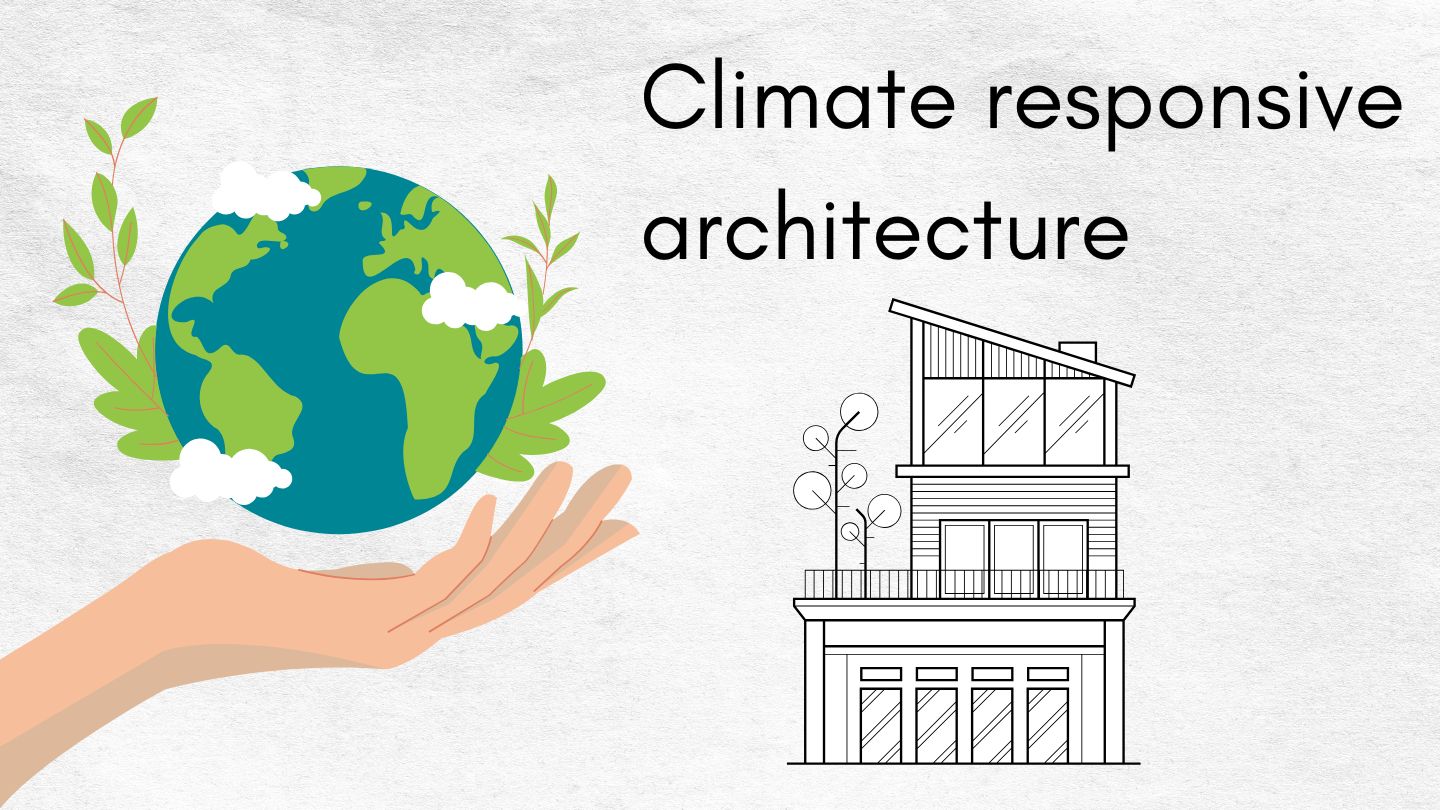Climatology is emerging as a central theme in architecture, especially as environmental concerns and sustainability take center stage. For architecture students, choosing a thesis topic that combines architecture and climatology opens doors to pioneering research that addresses climate challenges through innovative design. This post delves into crafting a compelling architecture thesis on climatology, providing ideas, methodologies, and resources to explore climate-responsive architecture.
Why Climatology in Architecture?
Climatology is the study of climate patterns and variations, which play a crucial role in architectural design. A thesis in architecture on climatology emphasizes how climate-responsive structures can help reduce energy consumption, promote thermal comfort, and adapt to specific climatic conditions. Integrating climatology into architectural design has far-reaching impacts:
- Enhanced Energy Efficiency: Buildings optimized for climate can significantly reduce dependency on artificial heating, cooling, and lighting.
- Increased Comfort: Structures designed with climate in mind are more comfortable, contributing to improved occupant well-being.
- Sustainable Development: Climate-responsive designs reduce environmental impact, supporting sustainability goals.
Selecting Your Thesis Topic in Architecture and Climatology
Choosing the right topic is vital for a successful architecture thesis on climatology. Here are some topic ideas for an architecture thesis on climatology:
- Climate-Responsive Facades in Urban Architecture: Study how adaptive facades can reduce energy loads in buildings across various climates.
- Vernacular Architecture and Climate Adaptation: Explore traditional architectural styles that evolved to meet climate challenges in specific regions.
- Thermal Comfort Strategies in High-Density Urban Areas: Investigate ways to achieve thermal comfort using passive strategies in cities.
- The Role of Climatology in Sustainable Skyscraper Design: Analyze how tall buildings can be designed to respond effectively to changing climate conditions.
- Wind and Solar Orientation in Climate-Responsive Design: Examine the impact of building orientation and natural ventilation on energy efficiency.
- The Impact of Microclimates on Urban Planning: Study how localized climate variations affect the design of urban environments.
Key Elements of a Climate-Focused Architecture Thesis
An architecture thesis on climatology involves understanding climate data, implementing climate-responsive techniques, and analyzing their effects on building performance. Here’s a breakdown of essential components:
1. Climate Data Analysis
Understanding the climate in the specific area of study is fundamental of architecture thesis on climatology. This involves analyzing:
- Temperature and Humidity Patterns: Evaluate daily, seasonal, and annual temperature variations and humidity levels.
- Solar Radiation: Identify the intensity and direction of sunlight throughout the year.
- Wind Patterns: Determine prevailing wind directions and speeds, which influence ventilation and cooling strategies.
Example Methodology: Utilize climate data software like Climate Consultant or Ecotect to assess the site-specific climate and generate relevant design guidelines.
2. Passive Design Strategies
Incorporate passive design strategies that maximize natural resources, such as:
- Passive Solar Design: Orient buildings to capture sunlight during cooler seasons and minimize exposure during warmer months.
- Natural Ventilation: Use wind direction and natural airflow to cool spaces, reducing reliance on air conditioning.
- Shading Devices: Implement fixed or movable shading elements to control heat gain and glare.
Example: Design a facade with adjustable louvers that respond to seasonal solar angles, optimizing both daylight and temperature control.
3. Building Materials and Construction
Choosing appropriate materials is essential for climate-responsive architecture. Consider materials with high thermal mass, reflective properties, or insulation qualities suitable for the local climate.
Example: In hot and dry climates, materials with high thermal mass (like adobe or concrete) can absorb heat during the day and release it at night, balancing temperature.

4. Renewable Energy Integration
The integration of renewable energy systems in architecture is a pivotal step toward achieving energy independence and environmental sustainability. Renewable energy not only reduces the carbon footprint of buildings but also supports the shift from fossil fuels to clean energy sources, aligning with global efforts to combat climate change. In climate-responsive architecture, the strategic incorporation of renewable energy technologies enhances both energy efficiency and sustainability.
- Solar Energy Systems
- Solar energy is one of the most widely used renewable sources in architecture due to its versatility and availability. Solar panels (photovoltaics) can be installed on rooftops, building facades, or integrated into architectural elements like shading devices and windows. These systems convert sunlight into electricity, reducing reliance on the grid and cutting energy costs.
- For heating purposes, solar thermal systems can be employed to provide hot water or heating for indoor spaces. Passive solar heating designs, such as trombe walls or sunspaces, harness solar radiation to warm interiors naturally, further reducing the need for artificial heating systems.
- Wind Energy Systems
- In regions with consistent wind patterns, wind turbines can be integrated into architectural designs to generate electricity. While large turbines are more suited to open areas, small-scale turbines can be adapted for urban settings, providing a decentralized energy source. Hybrid systems combining wind and solar power are particularly effective, ensuring a stable energy supply regardless of weather conditions.
- Geothermal Energy
- Geothermal systems utilize the consistent temperature of the earth to provide heating and cooling. Geothermal heat pumps extract heat from the ground during winter and dissipate heat into the ground during summer, offering a highly efficient solution for maintaining indoor thermal comfort. These systems are especially beneficial in regions with significant seasonal temperature variations.
- Biomass and Biogas Systems
- Biomass and biogas energy systems use organic materials like agricultural waste or plant matter to produce energy. These systems can be integrated into buildings in rural or semi-urban areas, promoting the use of locally available resources. Biomass boilers or biogas digesters can provide heating, cooking, and even electricity.
- Advantages of Renewable Energy Integration
- Environmental Benefits: Reduces greenhouse gas emissions and dependence on non-renewable resources.
- Cost Savings: Decreases energy bills over time, providing long-term economic benefits.
- Energy Security: Ensures a reliable and resilient energy supply, particularly in off-grid locations.
- Enhanced Building Value: Renewable energy integration often increases property value due to reduced operational costs and compliance with green building standards.
- Designing for Renewable Energy Integration
- Effective integration of renewable energy requires careful planning and analysis. Architects must consider site-specific factors such as solar orientation, wind patterns, and geological conditions. Tools like energy modeling software can simulate the performance of renewable systems, aiding in optimal placement and sizing.
- By prioritizing renewable energy in climate-responsive architecture, designers can create buildings that are not only self-sufficient but also contribute positively to the environment, paving the way for a sustainable future.
Structuring Your Architecture Thesis on Climatology
- Introduction
- Define climatology and its significance in architectural design.
- Explain your chosen topic’s relevance to climate-responsive architecture.
- Present your thesis statement.
- Literature Review
- Summarize existing research on climate-responsive architecture.
- Discuss key studies and methods in architectural climatology.
- Methodology
- Describe the climate data collection methods and tools.
- Outline your design strategies, such as passive cooling or renewable energy.
- Case Studies
- Present case studies of buildings designed for specific climates.
- Analyze how these designs successfully (or unsuccessfully) respond to climate challenges.
- Findings and Analysis
- Detail the effects of your proposed climate-responsive strategies.
- Compare your results with traditional building practices.
- Conclusion
- Summarize key findings.
- Discuss the implications for future climate-responsive architecture.
- Offer recommendations for integrating climatology in sustainable design.
Practical Tips for Crafting a Compelling Thesis
- Incorporate Visuals: Use diagrams, charts, and climate maps to illustrate your points clearly.
- Stay Updated on Climate Trends: Keep an eye on recent climate data, as patterns can shift due to global warming.
- Make it Data-Driven: Use quantitative data to support your design choices, lending credibility to your thesis.
- Utilize Simulation Software: Tools like EnergyPlus and DesignBuilder can simulate the impact of climate-responsive features, enhancing your analysis.
- Also read : Tips to writing a great architecture thesis
Resources for Your Architecture Thesis on Climatology
- Books: Climate-Responsive Design by Richard Hyde
- Journals: Journal of Building Performance Simulation, Architectural Science Review
- Software: Climate Consultant, EnergyPlus, DesignBuilder for climate simulation and performance analysis.
Conclusion
An architecture thesis on climatology is not just an academic exercise; it’s a step toward sustainable, resilient design in the face of climate change. By understanding climate data, integrating passive design strategies, and choosing suitable materials, you can create designs that work in harmony with the environment. With thorough research and a structured approach, your thesis can contribute valuable insights to the field of climate-responsive architecture, paving the way for a sustainable future.
Interested in creating a climate-responsive design? Share your thoughts or thesis ideas in the comments! Let’s build a future where architecture adapts to—and even thrives with—our changing climate.
Also read Disaster Management Through Architecture: 7 proven techniques

